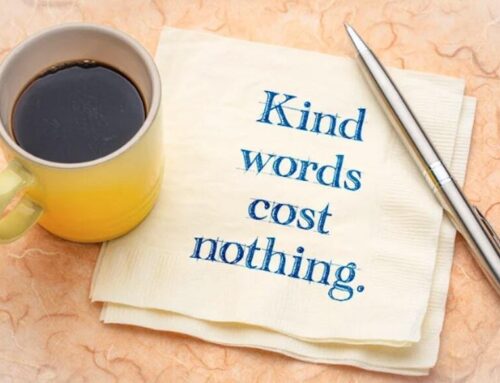
Conflicts arise in every business, but when it comes to customer interactions, how you handle them can make or break your reputation. Customer service conflict resolution isn’t just about putting out fires but about building stronger relationships.
When handled well, conflicts can turn frustrated customers into your most loyal advocates. Research shows that 78% of customers who have a positive service experience will come back, even after a complaint.
Customer service involves understanding emotions and perspectives. Navigating tricky situations requires a blend of empathy, communication, and problem-solving skills. As a customer service agent, your job is to not only address the issue but also ensure that both the customer and the company walk away satisfied.
In this blog, we’ll explore proven strategies and essential skills to help you master customer service conflict resolution and elevate every customer interaction.
Why Resolving Conflicts in Customer Service Matters
Customer service conflict resolution plays a vital role in shaping a brand’s success and directly impacts the customer lifecycle. When conflicts are handled effectively, they don’t just solve a customer’s problem-they pave the way for long-term relationships, brand loyalty, and positive word-of-mouth.
Let’s dive deeper into why mastering conflict resolution is crucial for your business.
Build Unshakable Customer Loyalty
When you address issues with care and professionalism, you create an opportunity to strengthen the bond with your customers. A well-resolved conflict often leads to greater customer satisfaction and trust, increasing the chances of repeat business. If you let dissatisfied customers feel heard and understood, they are more likely to stay loyal, even if things go wrong.
Enhance Your Brand’s Reputation
In the age of online reviews and social media, customer service conflict resolution is even more crucial. A smooth resolution process demonstrates that your company cares about its customers. When two or more parties are involved in a dispute, finding common ground is key.
By equipping your contact center with the right skills, you ensure that each customer interaction reflects positively on your brand. This proactive approach prevents minor issues from snowballing into public relations nightmares.
Minimize the Risk of Escalation
Conflicts, if left unchecked, can escalate quickly, leading to lost customers, negative feedback, or even legal troubles. Effective customer service conflict resolution techniques help de-escalate tense situations by allowing parties involved to express their concerns.
When agents manage their own emotions and help customers feel understood, they reduce the risk of further conflict, turning potential crises into win-win situations.
Boost Employee Morale
A well-handled conflict not only benefits customers but also empowers employees. When a customer service agent feels equipped to handle tough situations and resolve conflicts, they gain confidence and job satisfaction.
A positive work environment where employees feel capable of managing conflicts leads to a motivated team that is better able to contribute to the company’s success.

Navigating the Hurdles of Customer Conflict
Customer service challenges come in many forms, but they all boil down to one thing-how well you manage the moment when conflict arises. With the rise of instant gratification, global communication, and social media, resolving conflicts is no easy task.
Let’s break down some of the most common obstacles customer service agents face and how to overcome them.
The Demand for Instant Gratification
In today’s fast-paced world, everyone wants everything now. When customers demand immediate solutions, customer service agents often feel the heat.
It’s tough to satisfy angry customers who expect a fix on the spot. Patience wears thin, and agents need to remain calm while providing accurate information. Remember, a quick response can de-escalate tension, but an honest explanation of the process is key to managing expectations.
Navigating Language Barriers
Language differences can turn even minor issues into major conflicts. Misunderstandings due to poor communication or an unfamiliar communication style can escalate frustrations quickly. When serving a diverse customer base, agents need to be mindful of cultural differences and use clear, simple language to avoid confusion.
Training in cross-cultural communication can be invaluable here, helping agents connect better and reduce the chances of misinterpretation.
Managing Customer Expectations vs. Reality
Customer expectations can often clash with the reality of what a company can deliver. When there’s a gap between what customers want and what is feasible, it can lead to customer dissatisfaction and increase customer complaints.
Here, the challenge lies in setting realistic expectations from the get-go. Transparency about what can and cannot be done helps prevent misunderstandings, reducing the likelihood of a difficult customer encounter.
Balancing Costs With Satisfaction
Every business aims to be cost-efficient, but this often conflicts with the need to keep customers happy. Striking the right balance between cutting costs and ensuring a positive customer experience is challenging.
When customers feel that cost-cutting affects their experience, they may voice their concerns loudly. Remember, customers talk, and negative feedback can spread like wildfire. Offering value without sacrificing quality is the name of the game.
Handling Cancel Culture
In the age of social media, one controversy or misstep can lead to a tidal wave of backlash. Dealing with customer dissatisfaction amplified online, especially with the potential for a boycott, requires a strategic approach.
An empathetic and totally logical response can often help defuse negative sentiment. Still, sometimes, swift action to rectify the situation is needed to protect the brand’s reputation.
Techniques and Strategies for Resolving Conflicts in Customer Service
To truly excel in customer service, you need to use effective strategies to handle conflicts. Understanding the different types of conflicts and how to resolve conflicts within each scenario will elevate your customer experience.
Let’s look at the common types of conflicts in a contact center and how to manage them using proven conflict resolution strategies.
Customer vs. Agent
One of the most common examples of conflict involves a customer venting their frustration at an agent for an issue beyond their control.
Imagine a customer ineffectively expressing anger because their refund hasn’t been processed. The agent, equipped with conflict resolution skills, should first de-escalate the situation by using a calm tone of voice and acknowledging the customer’s concerns. Next, they should guide the customer through the conflict resolution process by explaining the steps needed to resolve the issue.
Providing clear timelines and possible outcomes can turn a heated exchange into a positive resolution. This approach not only resolves the conflict but also prevents negative reviews and improves the overall customer experience.
Peer vs. Peer
Conflicts aren’t just between agents and customers. Sometimes, disputes arise among peers over differences in handling tasks or service protocols. For instance, two agents might clash over the best approach to resolve a recurring customer complaint. In such cases, the conflict management styles need to focus on collaboration and compromise.
A supervisor can use conflict resolution tools like role-playing or brainstorming sessions to help both parties see potential solutions from each other’s perspective. This not only resolves the immediate conflict but also fosters a more cooperative environment where peers learn to act constructively in future disagreements.
Agent vs. Manager
At times, an agent may disagree with a manager’s decision-making process regarding handling a customer issue.
For example, an agent might feel a customer should receive a discount for a service failure, while the manager disagrees. Here, conflict resolution strategies like open dialogue and feedback loops are key. The manager should encourage the agent to share their perspective, discuss potential solutions, and align on the best course of action.
This transparent approach not only helps resolve conflicts but also empowers agents to feel valued and heard, boosting morale and confidence in handling future conflicts.

Key Skills for Handling Customer Service Conflicts
Mastering conflict resolution strategies requires more than just knowing the steps. Your customer service team needs specific conflict resolution skills that help them connect with customers, defuse tension, and find mutually beneficial solutions.
Let’s explore essential skills every customer service representative should develop to excel in managing conflict.
Hear More Than Words
Active listening involves fully focusing on the speaker, understanding their message, and responding thoughtfully. When facing upset customers, practice active listening by paraphrasing what they say to confirm understanding.
For example, “I hear that you’re frustrated because the product didn’t meet your expectations.” This approach not only addresses the customer’s concerns but also makes the customer feel valued. Through active listening, you lay the foundation for effective conflict management.
Step Into the Customer’s Shoes
Empathy means understanding the customer’s feelings and seeing the situation from their perspective. It’s about stepping into the customer’s shoes and acknowledging their emotional state.
An empathetic response might be, “I can see how this situation has been frustrating for you.” This method helps build rapport and trust, making it easier to introduce conflict resolution strategies that feel collaborative rather than confrontational.
Create a Constructive Tone
Using positive language can transform a conversation. Instead of saying, “I can’t help you with that,” try, “What I can do is…” This shift in language not only avoids negative tones but also guides the conversation toward solutions.
By keeping the dialogue positive, you help upset customers feel more at ease, which is a critical part of any conflict management strategy.
Stand Firm, Yet Fair
Assertiveness is about expressing your own needs and boundaries while respecting others. In customer conflict resolution training, agents learn to be assertive without being aggressive.
For example, “I understand your concern, and here’s how we can address it within our policies.” This balance helps both parties feel heard and respected, making the conflict resolution process smoother.
Flex and Adjust in Real-Time
Adaptability means quickly assessing the situation and adjusting your approach as needed. Not every customer conflict is the same, and customer service representatives must remain flexible to navigate varied scenarios effectively.
For instance, shifting from empathy to assertiveness depending on how the conversation evolves demonstrates a well-rounded approach to managing conflict.
Essential Tools and Resources for Handling Customer Conflicts
Equipping your team with the right tools and resources can turn an agitated customer into a satisfied one. A well-prepared contact center uses a mix of digital tools, training activities, and ongoing support to empower agents to handle even the most challenging situations.
Online Conflict Management Training
Invest in online conflict management training programs to help your team develop the skills needed for effective conflict resolution. These courses often include interactive scenarios, role-playing, and case studies that teach agents how to read body language, ask the right follow-up questions, and achieve mutual understanding with customers.
Active Listening Tools and Scripts
Provide agents with scripts that include empathetic phrases and follow-up questions to use when dealing with an agitated customer. This ensures consistency and helps customers feel heard. Tools that analyze body language cues during video calls can also offer real-time insights for resolving interpersonal conflict more effectively.
Continuous Learning and Simulation-Based Training
Use simulation-based training activities to recreate challenging situations your agents might face. This type of training allows them to practice their skills and refine their approach, preparing them for real-life conflicts. Regular debrief sessions further solidify learning and ensure your team stays sharp.
AllWin’s Expertise in Strengthening Your Customer Service Team
At AllWin Conflict Resolution Training, we empower your customer service team to master conflict resolution strategies that transform every customer interaction into an opportunity for growth. Our training programs go beyond theory, providing practical, hands-on experience to build confidence and competence.
By investing in our training, your team will learn advanced conflict resolution strategies tailored to your business needs. We focus on developing core skills like active listening, empathy, and assertiveness-essentials for creating a positive customer experience. Our workshops also equip your team with tools to handle difficult situations, build mutual understanding, and foster stronger customer relationships. Contact us today to learn more about how our conflict resolution training can help your team handle conflicts with confidence and care, ensuring satisfied customers and a thriving business.

About the Author: Jeremy Pollack
Jeremy Pollack, Ph.D. is the founder of Defuse De-Escalation Training, a sister company of Pollack Peacebuilding Systems, the largest workplace conflict resolution training and consulting firm in North America. He actively participates in de-escalation training and consulting initiatives for a variety of industries, from Fortune 500 companies to well-known non-profits. Besides his Ph.D. in Psychology from Grand Canyon University, Jeremy holds a Master’s Degree in Negotiation, Conflict Resolution, and Peacebuilding (NCRP) from California State University, Dominguez Hills. He is also a member of several organizations focused on conflict resolution and peacebuilding, such as the Peaceful Leadership Institute, the Association for Conflict Resolution, and the Division 48 (Division of Peace Psychology) of the American Psychological Association. Jeremy also holds several certifications in the field of training and coaching: he is a Certified Organizational Development Coach (CODC™), a Certified Clinical Trauma Specialist-Individual (CCTS-I™), and an Associate Certified Coach (ACC) under the International Coaching Federation.









